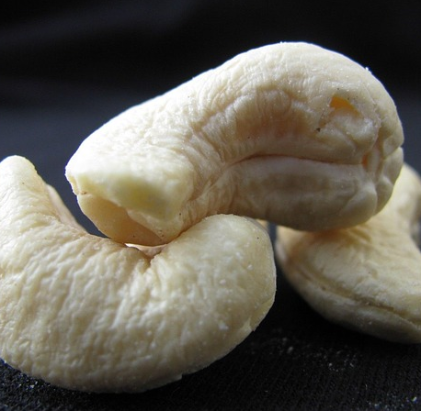- Phytopedia
- NUTS
- Cashewnut

GEEK TALK
BUT WE TALK
Devil’s nut, Casa, Maranon, Kaaju (Hin), Anacardo (Esp), Muntiri (Tam)
DID YOU KNOW?
Native to Northeastern Brazil, the cashew has been around for hundreds of years and the delicious and subtly flavored cashew is one of the most eaten nuts today. The cashew nut, in fact, is seeds that hang from the bottom of the cashew fruit, also called the cashew apple.
While the pear-shaped apple is considered to be a delicacy in Brazil and the Caribbean, it is not sold anywhere in the U.S. since the apple rots within 24 hours after being picked off the tree and therefore typically solely enjoyed by those who grow it.
The cashew tree is an evergreen tree, closely related to the mango or pistachio, which averages roughly 32 feet in height which is easily recognizable due to its short and oddly shaped trunk.
Cashews are very commonly eaten raw or roasted and are often sold or prepared lightly salted, sugared, or covered in chocolate.
Cashews are often used in preparation for many Indian dishes and the juice from the cashew apple has been used in production for some alcoholic beverages.
KITCHEN PHARMACY
- As with most nuts, cashews are proven to be very beneficial to overall heart health.
- In addition, cashews are great for bone health, energy production and work great as an antioxidant.
- Lastly, cashews can help prevent gallstones.
GEOGRAPHICAL DISTRIBUTION
While grown for hundreds of years, the cashew nut did not have much popularity until the 20th century.
In the 16th century, Portuguese explorers took cashews from Brazil and introduced them to India as well as some African nations. Today some of the leading producers of cashews are Brazil, Mozambique, Tanzania, and Nigeria and they typically thrive in tropical climates.



